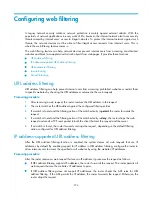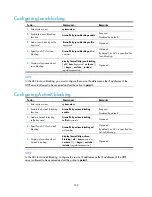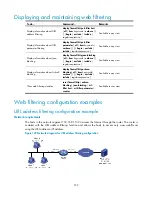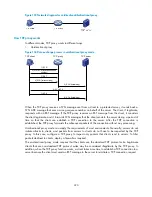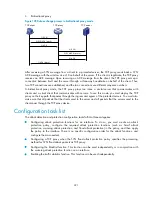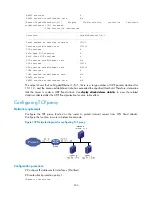
388
UDP flood attack
An attacker sends a large number of UDP packets to the target in a short time, so that the target gets too
busy to process normal services.
Blacklist function
The blacklist function is an attack protection measure that filters packets by source IP address. Compared
with ACL packet filtering, blacklist filtering is simpler in matching packets and can, therefore, filter
packets at a high speed. Blacklist filtering is very effective in filtering packets from certain IP addresses.
Working in conjunction with the scanning attack protection function or the user login authentication
function, the device can add blacklist entries automatically and can age such blacklist entries. More
specifically:
•
When the device detects a scanning attack from an IP address according to the packet behavior, it
adds the IP address to the blacklist. Thus, packets from the IP address are filtered.
•
When the device detects that an FTP, Telnet, SSH, SSL, or web user has failed to provide the
correct username, password, or verification code (for a web login user) after the maximum number
of attempts, it considers the user an attacker, adds the IP address of the user to the blacklist, and
filters subsequent login requests from the user. This mechanism can effectively prevent attackers
from cracking login passwords through repeated login attempts. The maximum number of login
failures is six, the blacklist entry aging time is 10 minutes, and they are not configurable.
The device also allows you to add and delete blacklist entries manually. Blacklist entries added manually
can be permanent blacklist entries or non-permanent blacklist entries. A permanent entry always exists in
the blacklist unless you delete it manually. configure the aging time of a non-permanent entry. After the
timer expires, the device automatically deletes the blacklist entry, allowing packets from the
corresponding IP address to pass.
NOTE:
On a distributed device, the blacklist function for excessive login failures takes effect only for users who
try to log in to the device from the interfaces on the main control board.
Traffic statistics function
The traffic statistics function collects statistics on sessions between the internal network and external
network almost in real time. custom attack protection policies based on the statistics. For example, by
analyzing whether the total number of TCP or UDP session requests initiated from the external network to
the internal network exceeds the threshold, determine whether to limit new sessions in the direction, or
limit new sessions to a specific internal IP address.
The device supports collecting statistics on the following items:
•
Total number of sessions
•
Session establishment rate
•
Number of TCP sessions
•
Number of half-open TCP sessions
•
Number of half-close TCP sessions
•
TCP session establishment rate
•
Number of UDP sessions

